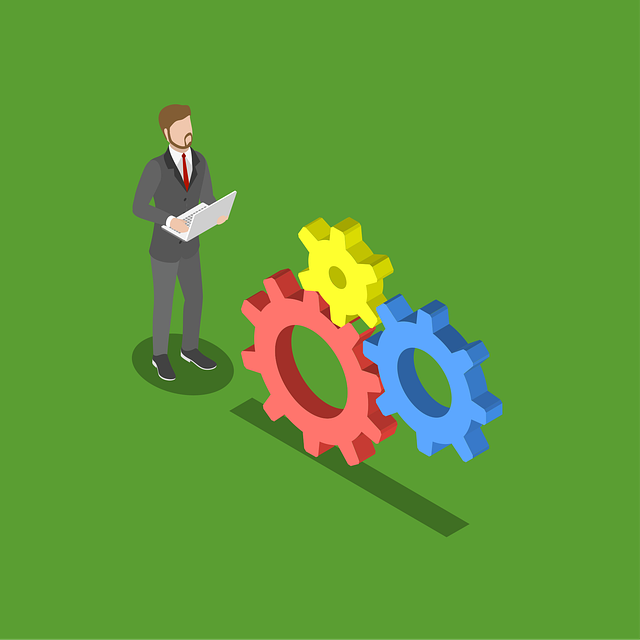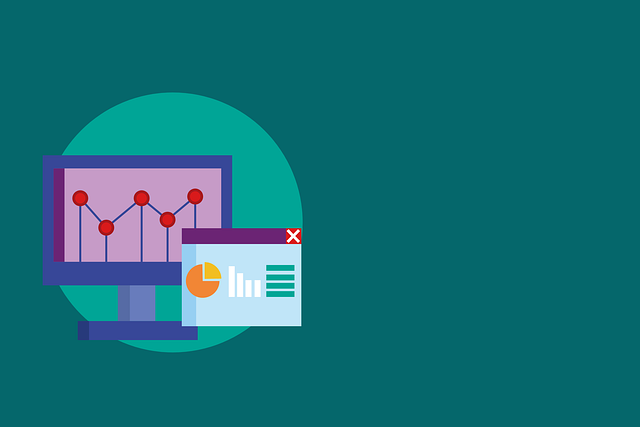AI workflows optimize business efficiency by tracking KPIs for data-driven decision-making. Utilizing tools like chatbots and machine learning, companies enhance process performance, streamline tasks, and improve customer interactions. Real-time analytics allows dynamic adjustments to AI configurations based on measurable outcomes, driving conversion rates and revenue growth in a competitive digital landscape.
In today’s digital era, optimizing business processes through AI workflows that track Key Performance Indicators (KPIs) is paramount. This article explores how AI can revolutionize your approach to monitoring and enhancing operational efficiency. We delve into understanding KPI tracking within AI workflows, defining specific business goals, implementing AI for efficient monitoring, and leveraging data collection and analysis techniques. By the end, you’ll grasp how to optimize processes with valuable AI insights for improved overall performance.
- Understanding KPI Tracking in AI Workflows
- Defining Business Efficiency Goals
- Implementing AI for KPI Monitoring
- Data Collection and Analysis Techniques
- Optimizing Processes with AI Insights
Understanding KPI Tracking in AI Workflows

In the realm of AI workflow optimization, Key Performance Indicators (KPIs) serve as a compass guiding businesses towards improved process efficiency. By tracking KPIs, companies can gain valuable insights into the performance and effectiveness of their AI workflows, including chatbot marketing strategies powered by AI chatbots. These indicators allow for data-driven decisions, enabling organizations to identify bottlenecks, measure success, and ultimately enhance overall business efficiency. For instance, monitoring metrics like customer engagement rates, response times, and conversion rates helps in understanding the impact of an AI chatbot’s implementation on various aspects of a company’s operations.
KPI tracking in AI workflows is not merely about assessing performance; it’s also a dynamic process that informs strategy. Businesses can leverage real-time data to adjust their approaches, fine-tuning their AI chatbots and workflow configurations for optimal results. This iterative approach ensures that the AI solutions remain aligned with business goals, making them versatile tools for navigating the ever-evolving digital landscape. In essence, understanding and effectively tracking KPIs is pivotal in harnessing the full potential of AI workflows for driving business efficiency.
Defining Business Efficiency Goals

Defining Business Efficiency Goals is a crucial step in implementing an AI workflow that tracks Key Performance Indicators (KPIs) to enhance process performance. As businesses strive for optimization, it’s essential to identify specific areas where automation can make a significant impact. This might include streamlining repetitive tasks, reducing human error, or accelerating decision-making processes. For instance, a company aiming to boost sales efficiency could focus on using AI sales assistants to qualify leads more accurately and quickly.
By setting measurable goals aligned with these aspirations, businesses can leverage the power of an AI workflow. Chatbot automation, for example, can handle customer inquiries round the clock, freeing up human resources for more strategic tasks. An AI assistant can also analyze vast amounts of data in real-time, providing valuable insights and recommendations that were once labor-intensive to obtain. This strategic approach ensures that efficiency goals are not just theoretical but are supported by data-driven decisions.
Implementing AI for KPI Monitoring

Implementing AI for KPI monitoring is a strategic move towards enhancing business efficiency through an ai workflow. This advanced technology enables automated tracking and analysis of Key Performance Indicators (KPIs) in real-time, providing valuable insights that were previously hard to come by. By leveraging machine learning algorithms, AI systems can identify patterns and trends within data, flagging areas for improvement and potential risks promptly.
In the context of ai sales and ai funnel, these capabilities are particularly beneficial. AI can monitor customer interactions throughout the sales process, optimizing each step of the ai automation. It ensures that marketing strategies, sales pipelines, and overall business operations are fine-tuned based on measurable outcomes, ultimately driving higher conversion rates and revenue growth.
Data Collection and Analysis Techniques

In an AI workflow designed to enhance business efficiency, data collection is a crucial step. Advanced techniques such as machine learning algorithms and natural language processing (NLP) are employed to gather and interpret vast amounts of data from various sources. This includes sales records, customer interactions, and operational metrics. By leveraging these technologies, businesses can extract meaningful insights that might otherwise go unnoticed. For instance, an AI sales assistant can analyze past performance to identify trends, predict future trends, and suggest optimal strategies for improved conversions.
The analysis phase involves sophisticated data modeling and visualization tools that transform raw data into actionable intelligence. This process enables stakeholders to quickly grasp key performance indicators (KPIs) and their interrelationships. For example, a sales chatbot can interact with customers to gather real-time feedback, which is then fed into the AI workflow for comprehensive analysis. This integration facilitates continuous learning and adaptation, leading to more informed decision-making and ultimately enhancing overall business efficiency.
Optimizing Processes with AI Insights

AI workflows are transforming the way businesses operate by providing valuable insights to optimize processes and enhance overall efficiency. By leveraging artificial intelligence, companies can gain a deeper understanding of their Key Performance Indicators (KPIs), allowing them to identify bottlenecks and make data-driven decisions. AI agents and assistants play a pivotal role in this process, automatically collecting and analyzing vast amounts of data from various sources within an organization.
This advanced analytics enables businesses to pinpoint areas where automation can streamline operations, reduce costs, and improve productivity. For instance, an AI workflow can analyze customer interactions, identify common issues, and suggest targeted solutions. The ability to quickly adapt processes based on real-time data ensures that companies stay agile and responsive to market dynamics, ultimately driving better business outcomes and a competitive edge in the market.
An AI workflow designed to track Key Performance Indicators (KPIs) can significantly enhance business efficiency by providing data-driven insights that optimize processes and improve overall performance. By implementing these strategies, organizations can streamline operations, make informed decisions, and achieve their defined efficiency goals. Integrating AI for KPI monitoring not only revolutionizes traditional methods but also paves the way for a more agile and adaptive business landscape in today’s digital era.
